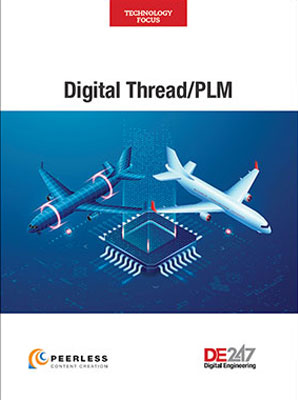FMI 3.0 Released
In the simulation, this is viewed as a major milestone for interoperability in system modeling and simulation.
Latest News
June 3, 2022
The Functional Mockup Interface (FMI) is regarded as the most widely adopted format for system simulation model exchange and the de facto industry standard for model exchange and co-simulation, as a result from the publicly funded MODELISAR project. FMI version 3.0, now released by the Modelica Association, is a major milestone for the standard with new features that enable use of FMI in important new use cases: advanced co-simulation, virtual electronic control units (vECUs), the next generation of digital twins and artificial intelligence applications.
FMI 2.0 has established itself as the most widely adopted format for model exchange and co-simulation since its creation as the result from the publicly funded MODELISAR project. The royalty-free nature of Modelica Association standards and availability of open-source and commercial solutions right from the first publication have contributed to its adoption across many industries: automotive, aerospace, industrial equipment, buildings, energy, manufacturing, and others.
More than 170 tools officially support FMI, and many in-house solutions are built on top of FMI.
Development of FMI 3.0 has been guided by needs of new use cases, and experience from current end users and developers. Major advances are the following:
- Advanced Co-Simulation. Many new technical features in FMI 3.0 are needed to enable high-quality, robust co-simulation of complex models.
- Virtual Electronic Control Units. FMI 3.0 has many features to turn Functional Mock-Up Units (FMUs) compliant with FMI 3.0 into full-fledged vECUs.
- Layered Standards. FMI 3.0 introduces “Layered Standards,” which allow embedding of artifacts from other standards within the FMI container systematically.
- Next-Generation Digital Twins. FMI is a format for system-level digital twins, executed in the cloud or at the edge.
- Artificial Intelligence Applications. Machine learning and other artificial intelligence techniques are popular for calibrating parameters of the models contained in functional mockup units (FMUs), the models compliant to FMI.
“FMI 3.0 is a major step forward to enable new use cases arising in system simulation and we hope to have addressed most of the major challenges we simulation engineers face today to improve simulation capabilities of our tool ecosystem: across tools, across teams, across companies, across industries,” says Andreas Junghanns, the FMI Project Leader, senior manager R&D, Synopsys.
“All contributors invested a lot in the development of FMI 3.0. This manifests their commitment to the interoperability of simulation tools. Especially the introduction of ports that allow physical and bus-like connectors, the support of new data types, or the introduction of clocks to handle and distribute events in an efficient way will improve the usability of FMI and allow new use-cases,” says Torsten Blochwitz, FMI deputy project leader, manager Research & Innovation, ESI Group.
For a short list of new features in FMI 3.0 in the FMI FAQ, click here.
For a view of a FMI 3.0 paper at the 2021 Modelica Conference, click here.
Sources: Press materials received from the company and additional information gleaned from the company’s website.
Subscribe to our FREE magazine, FREE email newsletters or both!
Latest News
About the Author
DE’s editors contribute news and new product announcements to Digital Engineering.
Press releases may be sent to them via [email protected].






